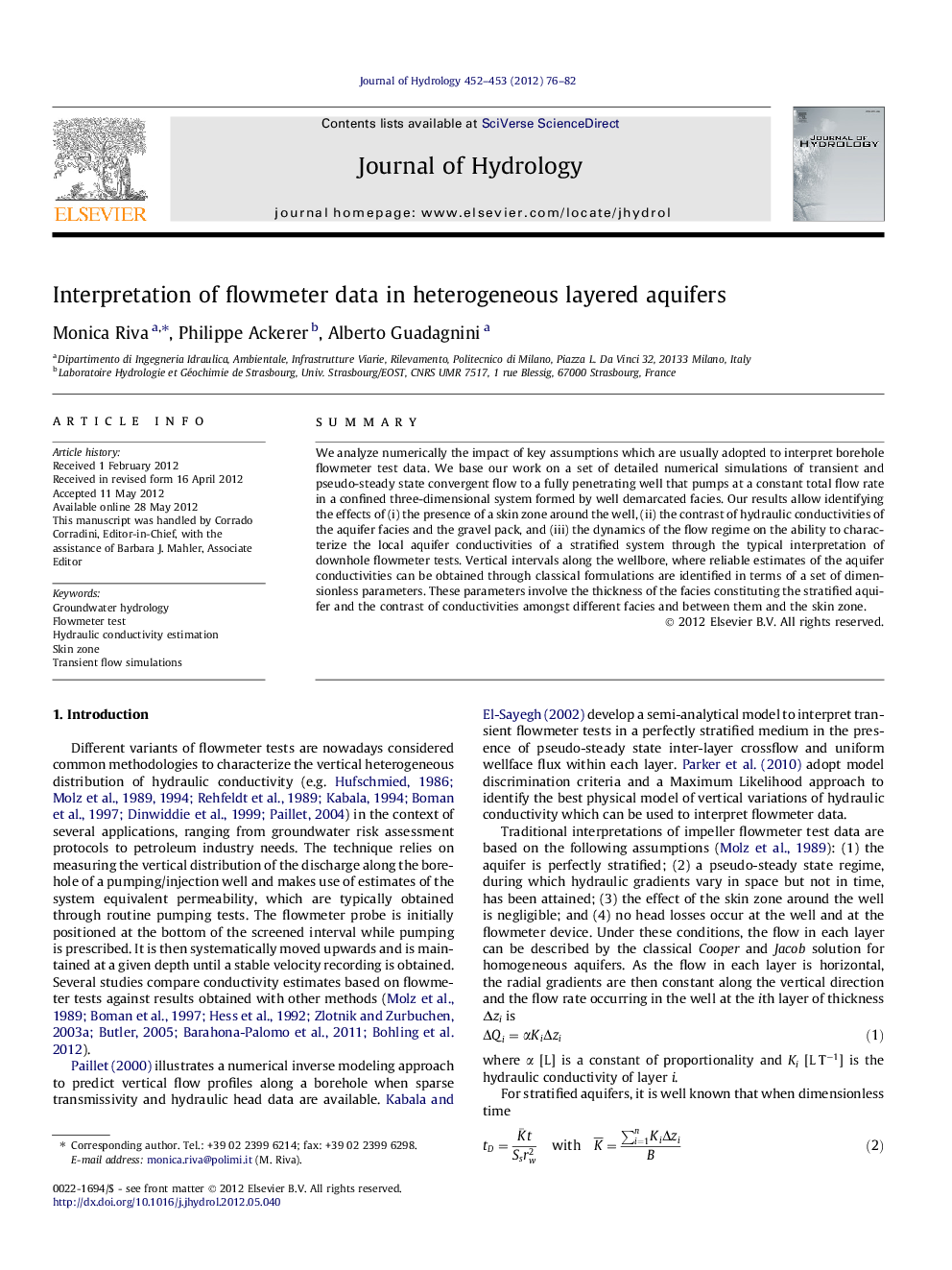| Article ID | Journal | Published Year | Pages | File Type |
|---|---|---|---|---|
| 6413959 | Journal of Hydrology | 2012 | 7 Pages |
SummaryWe analyze numerically the impact of key assumptions which are usually adopted to interpret borehole flowmeter test data. We base our work on a set of detailed numerical simulations of transient and pseudo-steady state convergent flow to a fully penetrating well that pumps at a constant total flow rate in a confined three-dimensional system formed by well demarcated facies. Our results allow identifying the effects of (i) the presence of a skin zone around the well, (ii) the contrast of hydraulic conductivities of the aquifer facies and the gravel pack, and (iii) the dynamics of the flow regime on the ability to characterize the local aquifer conductivities of a stratified system through the typical interpretation of downhole flowmeter tests. Vertical intervals along the wellbore, where reliable estimates of the aquifer conductivities can be obtained through classical formulations are identified in terms of a set of dimensionless parameters. These parameters involve the thickness of the facies constituting the stratified aquifer and the contrast of conductivities amongst different facies and between them and the skin zone.
⺠We analyze the impact of key assumptions adopted to interpret flowmeter data. ⺠We consider 3D stratified aquifers under steady state and transient flow conditions. ⺠Skin effects and drawdown dynamics impact the interpretations. ⺠Conductivity estimates are affected by significant errors close to facies interface. ⺠Transient effects on data analysis are persistent in the less conducive strata.
